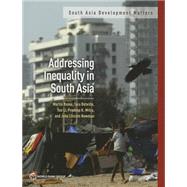Addressing Inequality in South Asia
, by Rama, Martín; Béteille, Tara; Li, Yue; Mitra, Pradeep K.; Newman, John Lincoln- ISBN: 9781464800221 | 1464800227
- Cover: Paperback
- Copyright: 10/8/2014
Inequality in South Asia appears to be moderate when looking at standard indicators,
such as the Gini index, that are based on consumption expenditures per capita. But
other pieces of evidence reveal enormous gaps, from extravagant wealth at one end
to appalling human development outcomes at the other. Which prompts the question:
How bad is inequality in South Asia? And why would that matter?
Addressing Inequality in South Asia takes a comprehensive look at the extent, nature,
and drivers of inequality in this very dynamic region of the world. It discusses how
some dimensions of inequality, such as high returns to investments in human capital,
contribute to economic growth while others, such as high payoffs to rent-seeking, or
broken aspirations, undermine it. Drawing on a variety of data sources, it disentangles
the contribution that opportunity in young age, mobility in adult years, and support
throughout life make to inequality at any point in time.
The analysis shows that South Asia performs poorly in terms of opportunity. Access to
basic services is partial at best, and can be traced to characteristics at birth, including
gender, location, and caste. Conversely, despite its cluttered urbanization and
widespread informality, the region has had a robust performance in terms of mobility,
both across generations and within the same generation. Migration and jobs have
served disadvantaged groups well, highlighting the importance of the urbanization and
private sector development agendas. Finally, support falls somewhere in between.
Poverty alleviation programs are pervasive, but the mobilization of public resources
is limited and much of it is wasted in regressive subsidies, while intergovernmental
transfers do not do enough to mitigate spatial inequalities.







